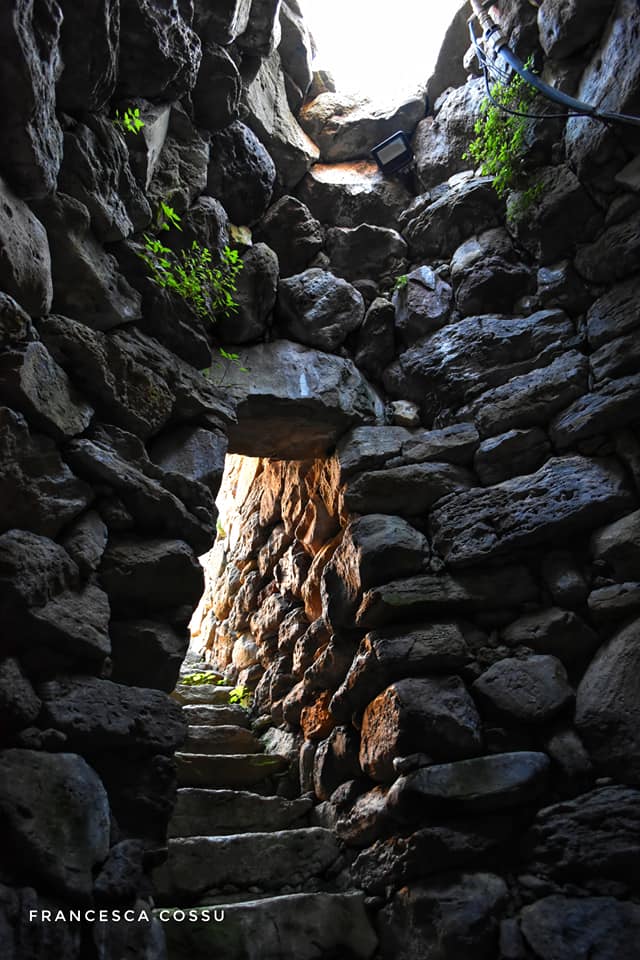“Sardara and Perfugas are the only ones to host the remains of a well temple in their town center: but the archaeological area of Santa Anastasìa in Sardara is the only one to have as many as four nuragic wells. The large and impressive sacred well is at the center of a vast nuragic complex, above which mostly stand the houses of the village. Fed by a strong water vein, it was known to all as “sa funtana de is dolus,” the fountain of sorrows. Considered by the sardaresi to be water with miraculous powers, it has always been believed to have the ability to heal many ailments due to its magical and curative influence. In 1913, the archaeologist Antonio Taramelli began excavating around the church of Santa Anastasìa: for over a year he continued his research, and eventually the sacred well was uncovered, completely built with unworked stones, untouched by iron. Unlike Santa Vittoria di Serri and Santa Cristina di Paulilatino, which were built with well-squared stones, the sacred well of Sant’Anastasìa, in its archaicity, conveys a greater suggestion to the visitor. The votive well inside the church yielded a large quantity of vessels of various shapes and of great scientific value, displayed in the museum of “Villa Abbas.” During the excavations of the 1980s, conducted in the huts of the sacred area by Dr. Giovanni Ugas, several hundred kilos of lead bread, a jar with about forty bronze objects, and three beautifully crafted basins, also in bronze, were discovered. Three millennia of history around this rich spring, just 150 meters downstream of “Sa Costa”: sacred and votive waters three thousand years ago, curative and magical up to the present day.” (“L’Acqua di Sardara” edited by the Municipality of Sardara – year 2014).
The photos of the nuragic well temple of Santa Anastasìa in Sardara are by Bibi Pinna and Francesca Cossu. Those of the well temple Predio Canopoli in Perfugas are by Bibi Pinna, Sergio Melis, and Marco Cocco.







